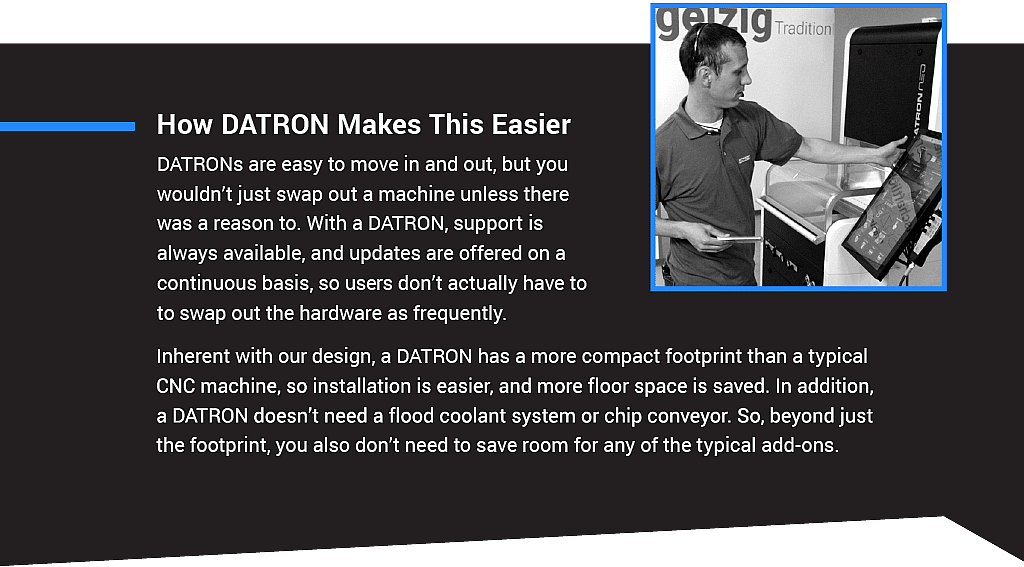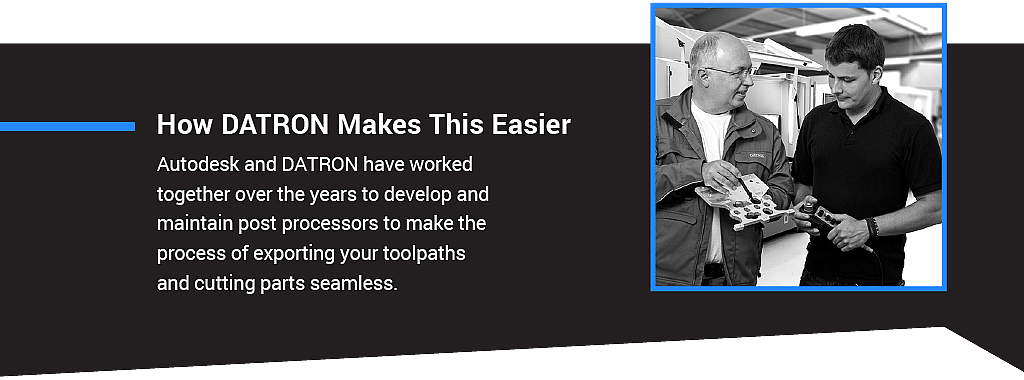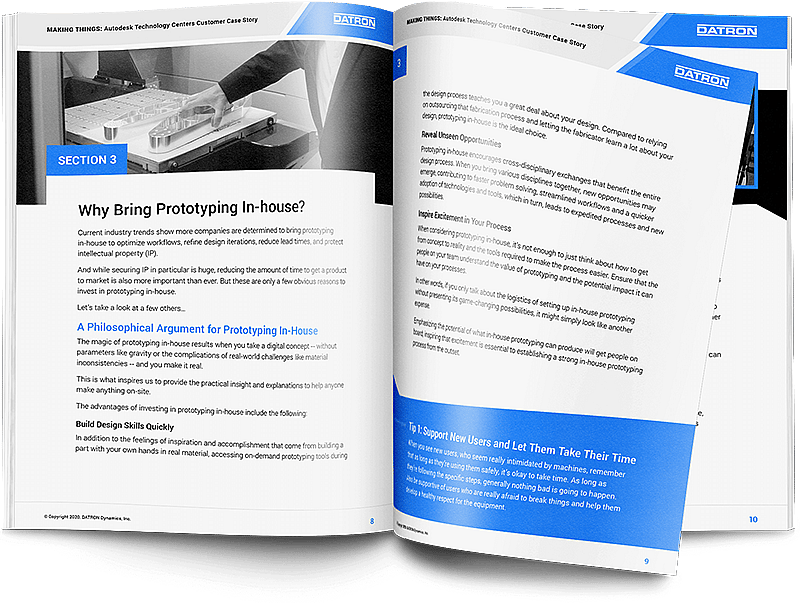Planning a productive prototyping space depends on the parts you’re planning on milling, what machines you’ll need, the amount of material you’ll require ready access to, as well as the general workflow.
For example, in the early planning stages of the technology center in Boston, the Autodesk team recognized that the projects coming in would be pretty large in scale. This informed the amount of space and the types of material handling capabilities that would be required.
For instance, architecture and construction firms needed to be able to conduct material studies and build segments of structures at full scale, which meant the technology center required a substantial footprint and large-scale machinery.

Autodesk developed a full-service operation from ideation and modeling to machining/fabrication in order to realize completed prototypes, from raw material to having a piece leave the facility ready for installation.
Without identifying the prototyping plans up front, Autodesk would have run the risk of running out of space, causing the facilities to impede process.
The Right Equipment in the Right Space
When you’re planning a space for making prototypes or products, you need to think long term. The technology centers cater to both large- and small-scale projects, which challenged the team to determine what equipment would fit (literally) the space and budget.
Autodesk needed the ability to reconfigure the workspace quickly. Since most of the machines require support equipment (lasers require large power supplies, mills require chilling and coolant systems, electrical systems, and vacuum systems) these factors scale with the size of the equipment.

In order to be at the forefront of the industry the Autodesk team needed to be able to cycle all the equipment in and out with some regularity. Many of these machines weigh in excess of 10-15 tons, which requires detailed planning for moving them in and out of the building.
“Since the technology center in Boston began with the goal to be able to make just about anything in architecture and construction, we focused on foundational fabrication methodologies, which meant we had to consider format size as well.“
Adam Allard, Senior Workshop Manager, Autodesk Technology Centers
Originally, the team started with a 5’ by 10’ work envelope, which was key to specifying space. The material and size informed choices around equipment: the right size, the right capability, and the right capacity. It also drove discussions on how to get materials in and out of the space.
Think About your Workflows
At the planning stages, being able to get the work done can often get overlooked. Everybody wants the capability to make almost anything they can think of, so they often stack their lab or space full of equipment, resulting in tremendous prototyping potential, but inadequate space to actually do the work.
Once the Autodesk team had the equipment specifications and building design finalized, construction began. From the very first day when it was just a room of columns, the team had the opportunity to determine where every light, every plug, and every airdrop went.
This allowed for ample space to support workflows, safely and effectively.
Utilities: Think Bigger
Another key to running your in-house prototyping space successfully involves securing adequate power and utilities to support your operation. You need to plan beyond the machines, and consider how to support them with power, air, vacuum, and HVAC.
And remember, you’ll always need more space than you initially thought.

Planning Material Storage
When space is at a premium, you need to plan for certain accommodations, like how much material users can bring into the space.
Questions to ask include:
- Where are users going to put their material?
- How long are they going to keep it there?
- What are they going to do with their waste material?
Planning for material storage is a great way to help optimize manufacturing and prototyping workflows, while reducing waste.
Maximum Flexibility, Smallest Footprint
When planning your space, consider which of the existing technologies is right for you, with 3D printing and CNC machining being two of the most popular for prototyping. A CNC machine provides more flexibility and capability when it comes to the choice and selection of materials.

Prototyping Software
Autodesk tools were created to help designers and engineers make anything imaginable.
By plugging Fusion 360 into the front end of your prototyping workflow and using DATRON on the back end, you have a turnkey solution for prototype development.
Fusion 360 combines CAD and CAM into one digital tool, which allows you to use a single platform to design your part, create the CAM files, and load them onto the machine—a process that can take as little as five minutes.
Structure is an added bonus. An established workflow makes it much easier for you to grow and train your team.
For example, at the technology centers digital tool libraries in Fusion 360 provided for all of the CNC machines onsite. When you pick up a different tool, it’s already in the software so you can simulate and verify your tool path to cut your part without any unintended collisions with the machine or tool.


